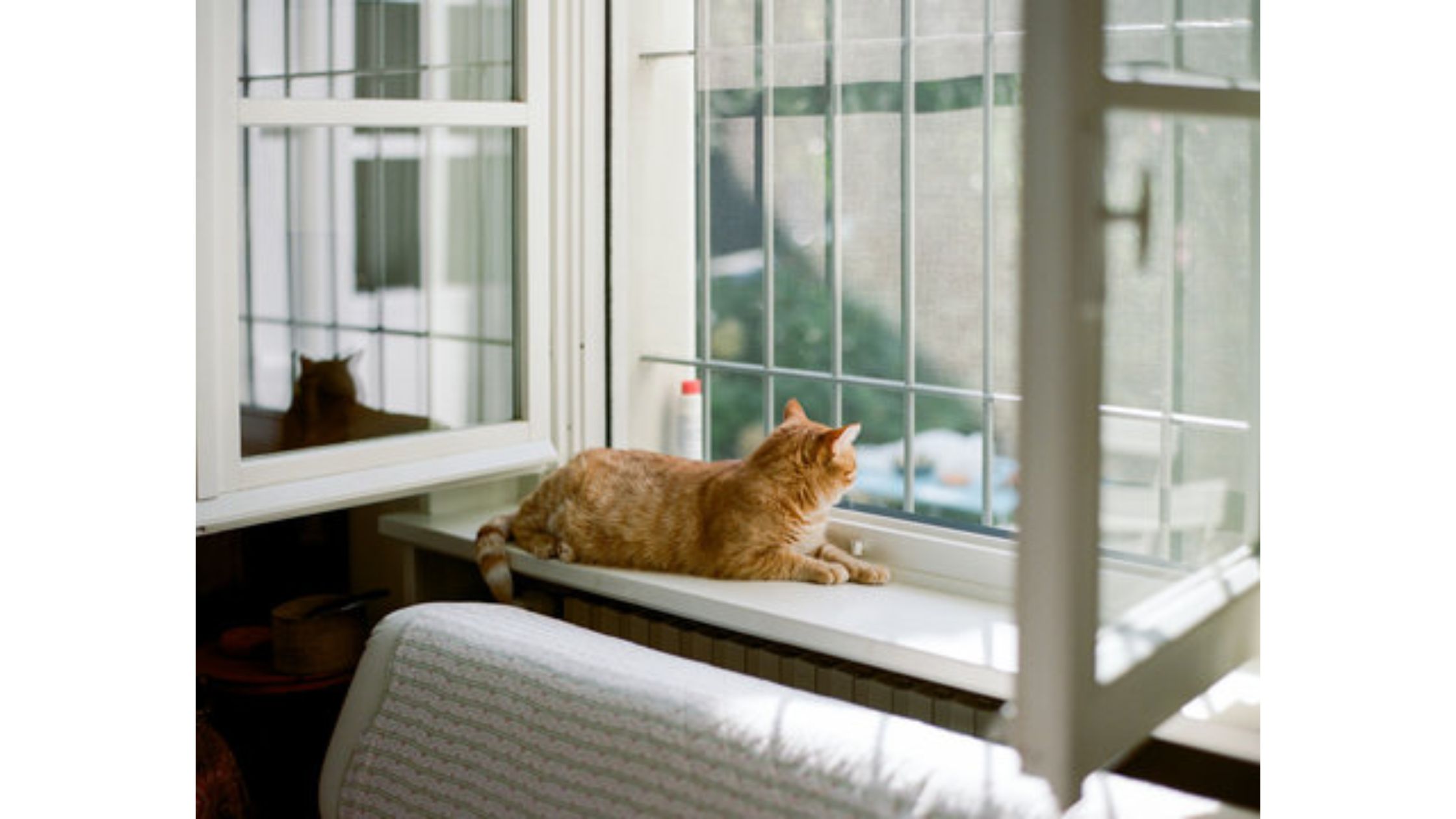City living brings unique challenges for feline companions. From swaying balconies to unsecured windows, high-rise apartments pose real dangers. This guide covers cat proof apartment NYC strategies, blending expert advice with actionable tips. Keep cats secure, engaged, and happy in every square foot of your urban home.
The Risks of High-Rise Living for Cats
Urban cats face hazards unseen in ground-level homes. Even a small slip at height can lead to severe injury. Awareness of these hidden dangers offers peace of mind.
High-Rise Syndrome: Real Dangers at Heights
High-rise syndrome describes injuries from window or balcony falls. Despite landing reflexes, cats can sustain broken bones, internal trauma, or worse. Every opened sash or balcony door demands protective measures.
Common Home Hazards in NYC Apartments
Furniture edges, loose electrical cords, and unsecured shelves rank among top indoor threats. In cramped living spaces, a mischievous swipe can knock objects onto a curious paw. Eliminating these hazards reduces stress and improves safety.
Securing Windows and Doors

Open air and city views delight cats, but crack ajar screens pose exit opportunities. Proper barriers safeguard exploration without blocking breezes.
Window Screens for Cats: What Works and Why
Cat-proof window screens resist claws and pressure. Choose reinforced fiberglass or vinyl-coated polyester for durability. Fit screens flush to frames and inspect monthly for wear.
| Screen Material | Strength Rating | Visibility | Airflow |
| Reinforced Fiberglass Mesh | High | Excellent | Excellent |
| Vinyl-Coated Polyester | Medium–High | Very Good | Very Good |
| Aluminum Pet Mesh | Medium | Good | Good |
Lock Mechanisms and Safety Latches
Sliding windows benefit from keyed locks or tension devices. For double-hung sashes, add latch guards at the midpoint. Childproof window locks often deter even the most persistent feline.
Balcony Safety Essentials
Balconies appeal to adventurous cats craving fresh air. Without safeguards, they transform into danger zones. Smart designs balance freedom and security.
Building a Catio
A “catio” transforms balconied space into an escape-proof play area. Use marine-grade netting on all sides and ceiling. Include perches and hiding spots to mimic outdoor terrain.
| Feature | Purpose | Installation Tips |
| UV-Stable Netting | Keeps cats contained | Anchor to railing and overhead beam |
| Elevated Perches | Offers vantage points | Secure to walls or netting frame |
| Sheltered Hideaway | Provides resting niche | Weatherproof materials for longevity |
| Climbing Ramps | Encourages exercise | Anti-slip surfaces essential |
Installation Materials and Design Tips
Galvanized steel poles and zip ties form a sturdy frame. For tenants, tension rods avoid drilling. Select breathable fabrics and drainage-friendly flooring to withstand weather.
Ready to expand your family? Check out The Ultimate NYC Cat Adoption Guide for adoption centers, paperwork tips, and transition strategies.
Indoor Cat-Proofing Strategies
Beyond heights, common household items pose threats. A single toxic plant or dangling cord can spell disaster.
Securing Hazardous Items
Lock cabinets containing cleaning supplies and medicines. Wrap electrical cords in protective tubing. Place potted plants beyond reach or swap for non-toxic varieties like bamboo palm.
Creating Engaging Indoor Spaces
Vertical shelving and wall-mounted perches simulate climbing trees. Rotate toys weekly to stimulate hunting instincts. Use scratching posts near windows and couches to protect furniture.
Technology and Monitoring Solutions
Smart home tools streamline supervision and alert owners to emergencies. A glance at an app can avert crises.
Pet Cameras and Smart Sensors
Install cameras with motion detection and two-way audio. Receive alerts when cats linger near open windows or restricted zones. Some devices pair with smart locks for immediate lockdown.
Alert Systems for Emergencies
Window vibration sensors trigger phone alerts if a screen gives way. Smoke and CO detectors designed for apartments add layers of protection for both cats and people.
Maintenance and Regular Safety Checks
Safety isn’t set-and-forget. Seasonal changes and wear demand ongoing attention.
Routine Inspections and Updates
Monthly walkthroughs reveal frayed screens, loose netting, or unstable shelves. Tighten fasteners, replace worn materials, and retest locks to maintain integrity.
Seasonal Considerations
Winter cold can make balconies icy, so completely block access. In summer, check that netting isn’t sagging under increased sunlight exposure.
When to Seek Professional Assistance
Complex or large-scale installations may require specialized skills. Professionals ensure reliability and compliance with building codes.
Expert In-Home Consultations
Behaviorists and safety experts tailor solutions to your floor plan and cat’s personality. Customized cat proof apartment NYC assessments uncover unseen vulnerabilities.
Collaboration with Building Management
Secure written permission for modifications and confirm fire code compliance. Management may offer approved suppliers or cover basic repairs.
Conclusion
Keeping cats safe in high-rise apartments takes planning, vigilance, and the right equipment. By reinforcing window screens, securing balconies, eliminating indoor hazards, and leveraging smart monitoring, you create a secure, stimulating environment. Regular inspections and seasonal updates ensure safety measures remain effective over time.
For tailored installations and expert advice on cat proof apartment NYC challenges, reach out to Gotham City Cat Care today.
Frequently Asked Questions
1. Which window screen type holds up best against claws?
Reinforced fiberglass mesh rates highest for tear resistance and long-term durability.
2. Can I install a balcony net without drilling?
Yes. Tension rods and heavy-duty zip ties secure netting frames without permanent alterations.
3. How often should I replace safety latches?
Every 12–18 months or at first sign of rust, looseness, or wear.
4. Are indoor plants really dangerous?
Many common houseplants contain toxins. Stick to non-toxic options like spider plants and bamboo.
5.What’s the quickest way to block balcony access?
Install sliding-door security bars at the threshold and layer netting over rails for immediate protection.

